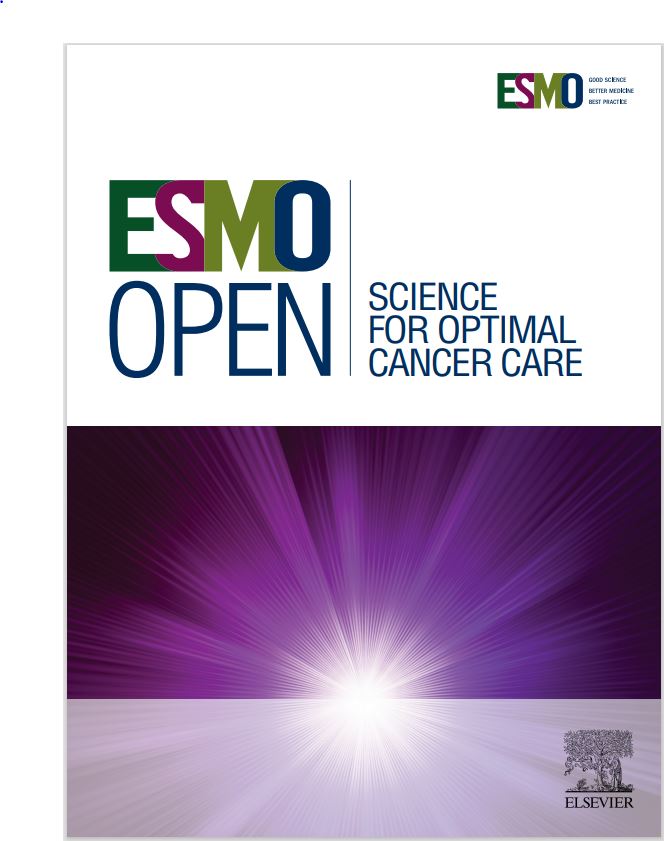LUDICAS:肺癌患者的性功能障碍,一项多中心横断面研究
IF 7.1
2区 医学
Q1 ONCOLOGY
引用次数: 0
摘要
背景肺癌患者可能会出现与肿瘤治疗相关的性功能障碍。这是临床医生未充分认识到的情况。本研究的目的是描述多中心队列患者中SD的患病率。患者和方法这项多中心、横断面、观察性研究于2023年7月至2024年2月进行。性功能评估采用患者报告结果(PRO)系统,采用性别调查问卷。对分类变量间的差异进行描述性分析和评价。通过logistic回归评估临床特征与SD之间的关系。结果纳入西班牙、哥伦比亚、阿根廷、葡萄牙等国24家医院448例患者。其中,277例(61.83%)为男性,365例(81.48%)为转移性疾病。284例患者(63.39%)报告在肿瘤治疗开始后出现SD。男性和女性报告的性反应阶段严重损害的频率很高,这在女性中是两倍高(P = 0.001)。女性是性欲、性唤起和性高潮严重受损的一个因素[优势比(OR) 3.72, 95%可信区间(CI) 2.48-5.60, P = 0.001],以及性活动减少(OR 1.98, 95% CI:1.17-3.19, P = 0.01),此外,年龄超过65岁(OR 3.86, 95% CI 1.01-15.25, P = 0.004)和教育程度高(OR 0.29, 95% CI 0.09-0.94, P = 0.0040)。来自葡萄牙和拉丁美洲的患者更有可能报告对性活动的不满意(OR 3.75, 95% CI 1.06-13.22, P = 0.0039)。女性(OR 3.53, 95% CI 1.88-6.6, P 0.001)、吸烟史(OR 1.77, 95% CI 1.01-4.01, P = 0.04)和肥胖(OR 1.70, 95% CI 1.01-3.16, P = 0.05)与全球性不满相关。结论肺癌患者在肿瘤治疗开始后SD的发生率较高。在发病频率和严重程度上存在显著的性别差异,社会文化因素在临床表现上也有重要影响。本文章由计算机程序翻译,如有差异,请以英文原文为准。
LUDICAS: sexual dysfunction in patients with lung cancer, a multicenter cross-sectional study☆
Background
Patients with lung cancer may suffer from sexual dysfunction (SD) related to oncological treatment. This is an under-recognized condition among clinicians. The aim of this study was to describe the prevalence of SD in a multicenter cohort of patients.
Patients and methods
This multicenter, cross-sectional, observational study was conducted between July 2023 and February 2024. Sexual function was assessed by patient-reported outcome (PRO) system using sex-specific questionnaire. Descriptive analysis and evaluation of differences between categorical variables were carried out. Associations between clinical characteristics and SD were assessed by logistic regression.
Results
Four hundred and forty-eight patients from 24 hospitals in Spain, Colombia, Argentina, and Portugal were included. Of these, 277 (61.83%) were male and 365 (81.48%) had metastatic disease. Two hundred and eighty-four patients (63.39%) reported the onset of SD following the initiation of oncological treatment. Males and females reported a high frequency of severe impairment of sexual response phases, which was twice as high in females (P = 0.001). Female sex was a factor for severe impairment of desire, arousal, and orgasm [odds ratio (OR) 3.72, 95% confidence interval (CI) 2.48-5.60, P = 0.001] and decreased sexual activity (OR 1.98, 95% CI:1.17-3.19, P = 0.01), in addition to age over 65 years (OR 3.86, 95% CI 1.01-15.25, P = 0.004) and high educational level (OR 0.29, 95% CI 0.09-0.94, P = 0.0040). Patients from Portugal and Latin America were more likely to report dissatisfaction with sexual activity (OR 3.75, 95% CI 1.06-13.22, P = 0.0039). Female sex (OR 3.53, 95% CI 1.88-6.6, P 0.001), smoking history (OR 1.77, 95% CI 1.01-4.01, P = 0.04), and obesity (OR 1.70 95% CI 1.01-3.16, P = 0.05) were associated with global sexual dissatisfaction.
Conclusions
Our patients with lung cancer had a high prevalence of SD after initiation of oncological treatment. There was remarkable sex disparity in the frequency and severity of this disorder as well as an important influence of sociocultural factors in the clinical presentation.
求助全文
通过发布文献求助,成功后即可免费获取论文全文。
去求助
来源期刊

ESMO Open
Medicine-Oncology
CiteScore
11.70
自引率
2.70%
发文量
255
审稿时长
10 weeks
期刊介绍:
ESMO Open is the online-only, open access journal of the European Society for Medical Oncology (ESMO). It is a peer-reviewed publication dedicated to sharing high-quality medical research and educational materials from various fields of oncology. The journal specifically focuses on showcasing innovative clinical and translational cancer research.
ESMO Open aims to publish a wide range of research articles covering all aspects of oncology, including experimental studies, translational research, diagnostic advancements, and therapeutic approaches. The content of the journal includes original research articles, insightful reviews, thought-provoking editorials, and correspondence. Moreover, the journal warmly welcomes the submission of phase I trials and meta-analyses. It also showcases reviews from significant ESMO conferences and meetings, as well as publishes important position statements on behalf of ESMO.
Overall, ESMO Open offers a platform for scientists, clinicians, and researchers in the field of oncology to share their valuable insights and contribute to advancing the understanding and treatment of cancer. The journal serves as a source of up-to-date information and fosters collaboration within the oncology community.
 求助内容:
求助内容: 应助结果提醒方式:
应助结果提醒方式:


